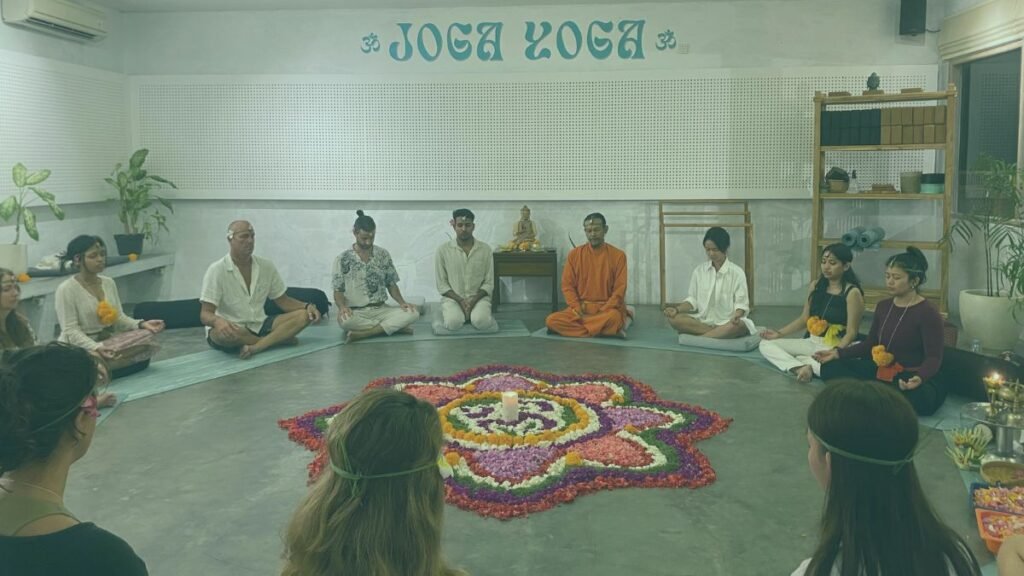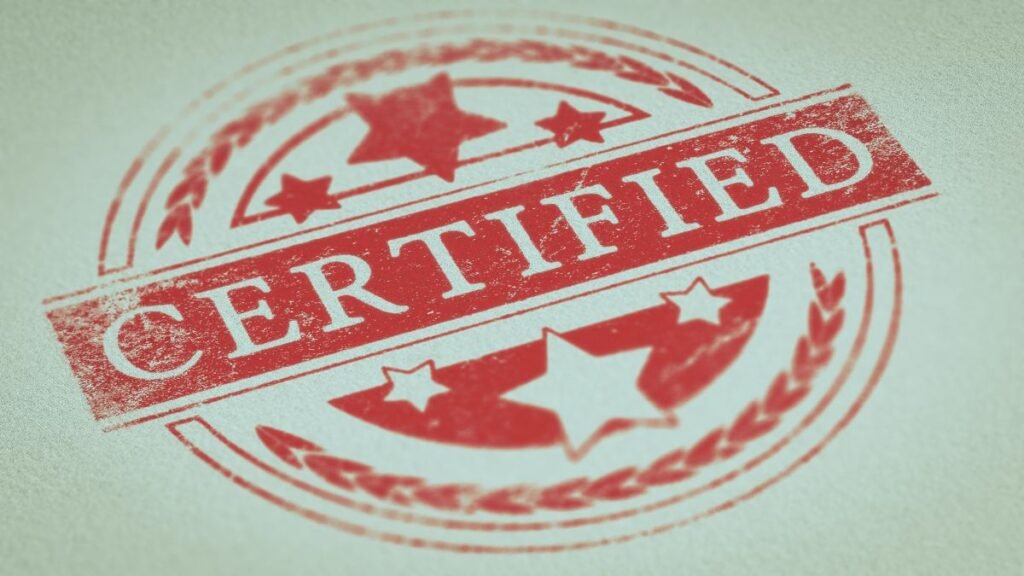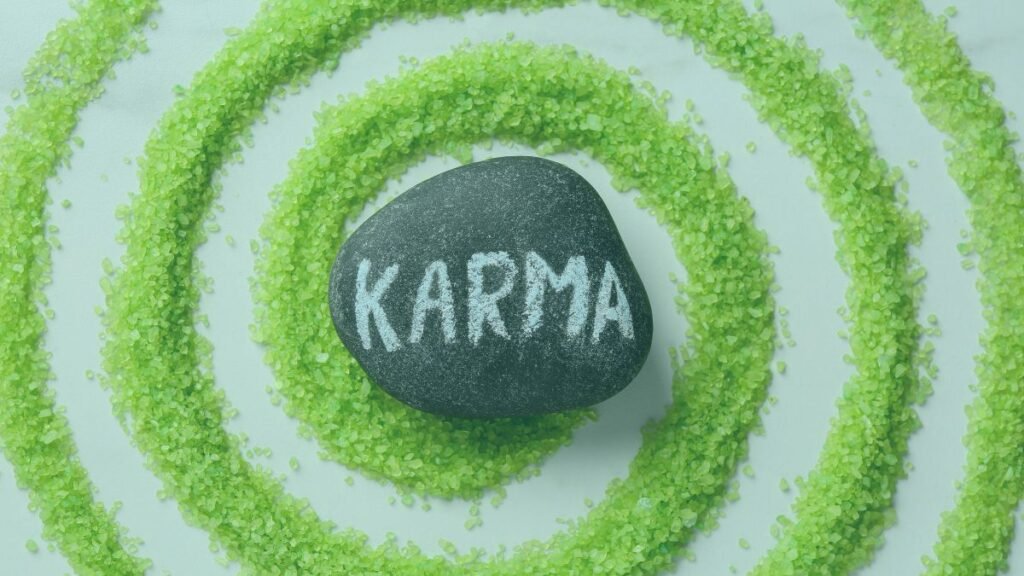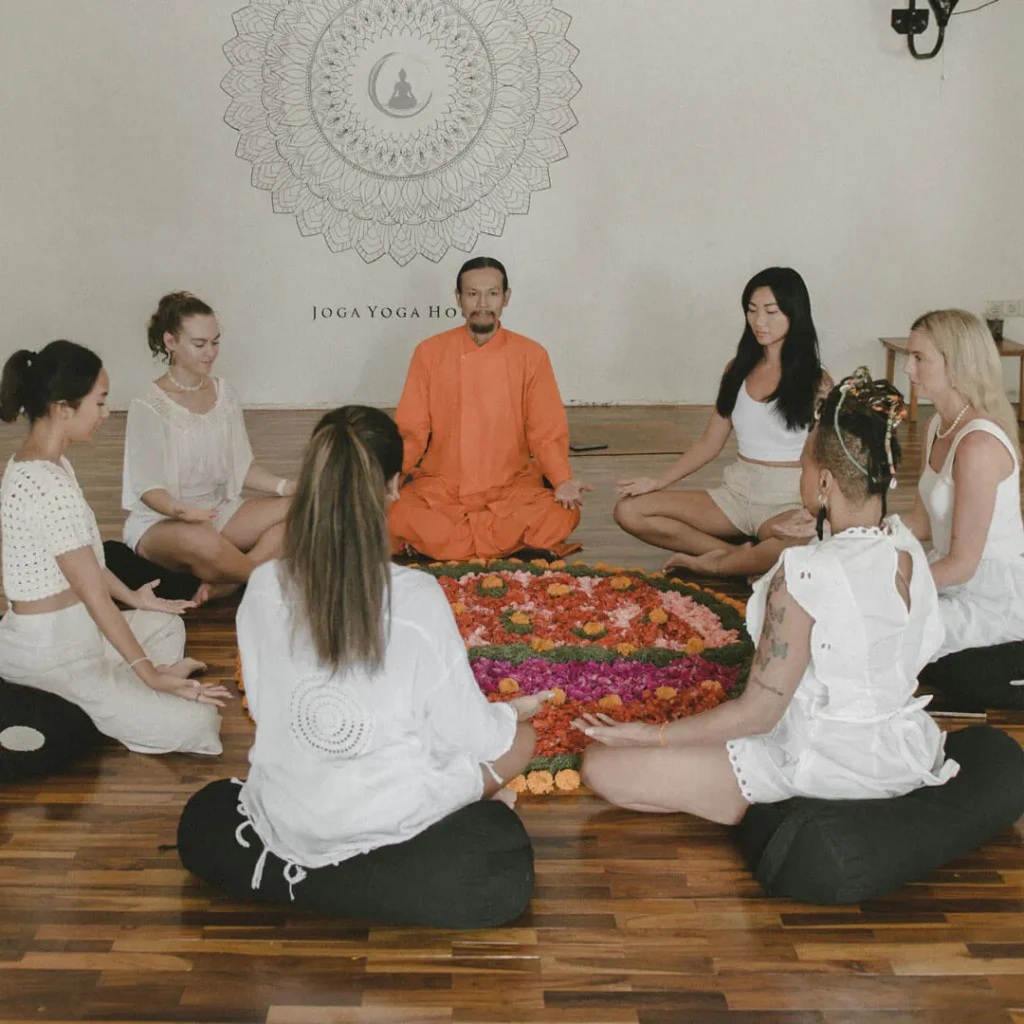Understanding Karma Beyond the Buzzword
Many people think karma means getting what you deserve, but in yoga, the meaning is deeper. The word karma comes from Sanskrit and means “action.” It includes every thought, word, and choice you make. Each action leaves an effect, shaping your life and experiences.
Yoga teaches that karma is not a punishment or a reward. It is simply the result of how we use our energy. Every moment gives us a chance to act with awareness or without it. The more aware we become, the more freedom we gain.
Ancient yoga texts describe three main types of karma that explain how our past, present, and future connect. These are Sanchita Karma, Prarabdha Karma, and Agami Karma. Understanding these types can help us live with more purpose and peace.
At Joga Yoga Bali, this idea is part of what we teach in our yoga philosophy classes. Our students learn how awareness of karma helps guide daily choices, both on and off the mat.

What Is Karma in Yoga Philosophy
In yoga, karma means every action we take in body, speech, and mind. It is one of the main teachings in Indian philosophy. Karma appears in sacred books like the Upanishads, the Bhagavad Gita, and the Yoga Sutras. These writings explain that our actions, thoughts, and intentions shape who we become.
Karma is often described as a cycle of cause and effect. When we act with love and awareness, we create harmony. When we act without care, we create struggle and confusion. Yoga helps us understand this cycle so we can make choices that lead to balance.
Life brings many lessons, and karma is how we learn them. Instead of running from challenges, yoga encourages us to meet them with patience and wisdom. Awareness gives us the power to create a new direction for our lives.
How Karma Works in Daily Life
Karma is active in every part of life. Every small action plants a seed, and each seed grows into a result. When we smile at someone, they may smile back. When we act with anger, that same energy often returns to us. This is karma at work.
The results of karma may not appear right away. Some actions show results quickly, while others take time. Like seeds in the ground, karma grows when the right conditions appear. The good news is that by becoming more mindful, we can choose which seeds we plant.
In daily life, you can see karma in how you treat others, how you handle stress, and how you respond to challenges. If you stay calm and kind, peace becomes part of your life. Yoga helps you notice your habits and guides you to act from a place of understanding instead of reaction.
The Three Types of Karma in Yoga Philosophy
The ancient yogis taught that karma moves through time in three ways. These are called Sanchita Karma, Prarabdha Karma, and Agami Karma. Each type shows how your past, present, and future are connected through your actions and thoughts.
- Sanchita Karma is all the stored karma from the past.
- Prarabdha Karma is the part of that karma you are living right now.
- Agami Karma is the new karma you are creating in this moment.
Knowing about these three helps you understand why certain experiences appear in your life and how you can shape what comes next.
Sanchita Karma: The Stored Karma
Sanchita Karma is the total collection of all your past actions from this life and others before it. Think of it like a large storage of energy that holds every choice, habit, and lesson. Most of it stays quiet until the right moment for it to show up.
You can see Sanchita Karma in natural talents or patterns that seem to come from nowhere. Maybe you learn things quickly, or you have a certain fear or attraction that feels familiar. These may be traces of your stored karma.
Yoga helps you work with Sanchita Karma through awareness and meditation. When you observe your patterns calmly, they begin to lose power over you. By choosing kindness, honesty, and mindfulness in the present, you stop adding to old energy. Over time, the weight of past karma fades, and you feel lighter inside.
Prarabdha Karma: The Karma You Are Living Now
Prarabdha Karma is the part of your stored karma that is active in your current life. It shapes the main events and conditions you experience right now, such as your family, health, and opportunities. You can think of it as the lessons that have already started.
This type of karma cannot always be changed right away, because it is already in motion. For example, if you plant a tree, you cannot turn it into a flower the next day. But you can decide how to care for it. In the same way, you cannot always control what happens, but you can control how you respond.
Yoga helps you face Prarabdha Karma with strength and calmness. Through mindfulness, breath, and acceptance, you learn to handle life with more peace. Each challenge becomes a chance to grow and learn rather than a punishment to fear. By staying aware, you soften the effects of karma and bring more harmony into your life.
Agami Karma: The Karma You Create Through Action
Agami Karma is the new karma you create through your current actions, thoughts, and intentions. Every choice you make now becomes part of your future. It adds to your collection of experiences that will later unfold as new opportunities or challenges.
If you act with love, honesty, and awareness, you create peaceful karma that leads to growth. If you act from anger, greed, or fear, you create more confusion for yourself later. The good news is that this type of karma is fully in your hands. You can begin shaping it right now.
Yoga teaches you how to create positive Agami Karma through self-awareness and right action. By practicing mindfulness, compassion, and service, you bring more light into your life and the lives of others. This is the path of Karma Yoga, where actions become tools for self-discovery rather than attachment.
How the Three Types of Karma Work Together
The three types of karma are always connected, working like a cycle. Sanchita Karma is your storage of all past actions. Prarabdha Karma is the part of that storage you are experiencing now. Agami Karma is what you are creating in the present that will return in the future.
You can imagine karma as a garden. The seeds you planted long ago are growing into plants today. The seeds you plant now will become tomorrow’s garden. Yoga teaches you how to take care of the soil, pull out the weeds, and plant new seeds of awareness and peace.
By understanding how these three kinds of karma flow together, you stop feeling like a victim of life. You start to see that every thought and action has meaning. With awareness, you can choose actions that create joy, freedom, and balance.
Karma and Yoga: Transforming Action Into Awareness
Yoga is more than stretching or movement. It is a practice that transforms how you think, act, and live. Through yoga, you learn to act with awareness instead of reacting out of habit. This is how karma begins to change.
There are many ways yoga helps balance karma:
- Asana (Posture Practice): Brings strength, discipline, and awareness of the body.
- Pranayama (Breath Control): Calms emotions and clears the mind.
- Meditation: Creates space between thoughts so you can act consciously.
- Selfless Action (Karma Yoga): Turns everyday work into a spiritual practice.
When you practice yoga with awareness, your actions stop creating more confusion and start creating peace. Each movement and breath becomes a choice made with intention. Over time, this awareness purifies the mind and helps you live with more clarity and kindness.
Karma and Dharma: Acting With Purpose
Karma is about what you do. Dharma is about why you do it. Dharma means “right action” or “life purpose.” It is the natural path that fits your truth and your role in the world.
Karma and Dharma work together. Karma is the energy that moves through your actions. Dharma guides that energy in the right direction. When you act in harmony with your dharma, your karma becomes lighter and more positive.
For example, a yoga teacher who teaches to help others is acting in alignment with dharma. Their actions bring peace instead of ego. A person who uses their skills to serve others or protect nature is also following their dharma.
Yoga helps you listen to your inner voice and discover your true purpose. When your actions and purpose work together, life begins to flow with less resistance. This is where real freedom begins.
At Joga Yoga Bali, students explore these teachings deeply during our Yoga Teacher Training. We study how karma and dharma guide each person’s spiritual path and how living with purpose can transform not only your own life but also the world around you.
Real-Life Examples of Karma in Modern Living
Karma is not only a spiritual idea. It can be seen in daily life in very simple ways. Every choice you make leaves an effect that shapes your relationships, work, and well-being.
At Work
If you treat others with honesty and respect, you often receive the same energy back. You build trust and create a positive space. But if you act with anger or pride, people may respond with the same attitude. Your work life becomes stressful and heavy. This is karma in action.
In Relationships
When you listen, show patience, and speak kindly, you create harmony. When you react quickly or speak without care, you create distance. Yoga teaches you to pause before you act, giving you a moment to choose peace instead of reaction.
In Health
Your body also reflects your actions. A healthy diet, regular sleep, and mindful habits build strength and calmness. Poor choices made again and again create imbalance. By practicing yoga, you become aware of how your body responds and learn to make better decisions.
At Joga Yoga Bali, students often share how understanding karma changes their daily lives. They become more aware of how their actions affect others and start making choices that bring peace instead of stress.
How Yoga Changes Your Karma
Yoga helps transform karma by changing how you think and act. It teaches you to move from automatic reactions to conscious responses. The more aware you become, the more freedom you find in every choice.
Through Movement
When you practice asanas (yoga postures), you connect your mind and body. This builds discipline and awareness. You begin to notice how your emotions affect your movement and how calmness brings balance.
Through Breath
Breath control, or pranayama, helps you manage your emotions. Deep, steady breathing reduces anger and anxiety. It creates space for calm choices instead of quick reactions.
Through Meditation
Meditation helps you see your thoughts clearly. Instead of being controlled by them, you learn to observe and let them pass. This awareness breaks old habits that keep you stuck in the same patterns of karma.
Through Kind Action
Karma Yoga, the yoga of action, means doing good without expecting anything in return. Helping others with love and service creates positive karma and clears the mind. It is one of the most powerful ways to grow spiritually.
Over time, yoga turns every action into an act of awareness. You start to live with intention, peace, and self-understanding.
Karma in Yoga Teacher Training at Joga Yoga Bali

At Joga Yoga Bali, the study of karma is not just theory. It is something students practice and experience every day. During our Yoga Teacher Training, we explore the meaning of karma and how it connects to the path of yoga.
Students learn how thoughts and actions create energy. They reflect on personal patterns and discover how awareness can shift them. Our philosophy sessions include deep discussions, group sharing, and guided meditation to help each person see their karma clearly and gently.
We also teach how dharma, or purpose, guides action. When you act with awareness and service, you live in harmony with your true path. This is a key part of becoming not only a yoga teacher but a conscious human being.
Our training blends ancient philosophy with modern understanding. Whether you are a beginner or an experienced yogi, you will learn how to bring these lessons into your daily life and teaching.
Conclusion: Living Consciously, Creating Good Karma
Karma is not about luck or destiny. It is about awareness. Every moment gives you the chance to create peace, balance, and joy through your choices. The three types of karma — Sanchita, Prarabdha, and Agami — remind us that the past may shape the present, but the present always shapes the future.
Through yoga, you learn to live more consciously. You stop reacting to life and start responding with patience and love. This is how real freedom begins.
At Joga Yoga Bali, we believe yoga is more than movement. It is a way of living that brings awareness to every part of life. When you understand your karma and act with mindfulness, you begin to write a new story for yourself and for the world around you.





